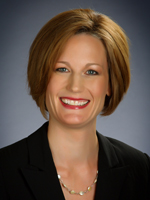enrollment
How predictive modeling can transform your student recruitment efforts

In my work as a consultant, I travel to campuses of every size, type, and mission. These institutions, like yours, all have their own unique strengths and challenges. However, if there is one constant struggle I see, it’s that every campus seems to have greater expectations for enrollment while having fewer resources to meet those expectations. I think we’re setting a record in higher education for having to do more with less.
That’s why I’m often surprised by how many campuses haven’t looked into predictive modeling for their recruitment efforts. Using a predictive model—a statistical analysis that shows the likelihood of a student enrolling—presents a host of benefits: more focused mailings and communications, more strategic use of travel, higher enrollment yields, and much more precise shaping of enrollments, to name a few.
The recent results of our predictive modeling clients really illustrate the benefits to your campus. In 2010, Noel-Levitz worked with more than 100 campuses to identify those prospective students who were most likely to apply and enroll at their institutions. With our system, every student receives a score from 0.0 to 1.0. The higher the score, the greater the likelihood of that student enrolling. This qualification allows colleges and universities to channel their scarce time and resources into the recruitment strategies with the greatest potential for improving enrollment.
The table below shows how this works. It lists the combined outcomes for the 2010 entering classes for our campus partners.
2010 enrollment results using predictive modeling

Notice that at a 0.5 model score and above, 85 percent of all deposits for these campuses came from only 45 percent of the inquiry pool. Conversely, only 8 percent of deposits came from the lowest scoring (0.0- 0.39) 35 percent of inquiries. In other words, these campuses were able to focus their time, energy, and dollars on fewer inquiries, thereby improving their chances of building strong relationships with the right students.
How to turn model scores into enrollment numbers
With these model scores in hand, campuses can then develop and implement key strategies that help turn these figures into students who enroll. Here are four strategies that have worked for our campus partners:
1. Segment and target mailings. The use of a predictive model allows you to segment your written and electronic communications flow. It is very common for campuses to use a certain model score as a cut-off for their most expensive four-color brochures and send only electronic messages to the students with lower models scores. For example, the viewbook would only be sent to students with score of at least a 0.5 while an extensive e-mail campaign would target the lower-scoring students. In addition, campuses often use supplemental geodemographic data that is included with the model to target mailings based on ethnicity, geography, and household income.
2. Build stronger relationships with prospective students. By using model score ranges, admission counselors can identify their “Top 100” list of students. These are the inquiries who have the greatest likelihood to enroll and deserve the most attention from the professional staff. Given the large volume of students (from inquiries to deposits) that counselors are trying to manage, this strategy helps them to build stronger relationships. The model can also help identify other groups of students that student workers can call, as well as those that may get a call from a faculty member or alumni volunteer.
3. Improve counselor travel. Many campuses spend a great deal of time and money travelling to schools and college fairs with marginal results. With the help of a predictive model, counselors can identify those high schools where the most interested students are and eliminate time spent meeting with students who will never enroll. By eliminating some travel, the admission counselors will have more time in the office meeting face to face with students and families during campus visits.
4. Improve student search. An effective student search program continues to be one of the most important strategies for recruiting new students. The challenge is that most students no longer reply to search mailers (or other campus communications). Instead, they remain anonymous in the process and learn about schools electronically through campus Web sites and other electronic venues. With the use of a prospect model and a SMART Approach model with Noel-Levitz (which qualifies student lists prior to purchase), campuses can focus their resources on buying and communicating with the search names who are most likely to enroll.
Meeting new student enrollment goals in today’s competitive environment is not easy. Most campuses know that they need to find some additional tools to help them with the sometimes overwhelming task of reaching goals. Predictive modeling is one tool that can help.
If you would like to learn more about how predictive modeling adds greater control and efficiency to your recruitment efforts, my colleague Kristin Davis will be discussing this subject in-depth during a free Webinar on April 21. Or please feel free to e-mail me if you have questions or would like to schedule a time for us to talk by phone.